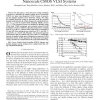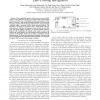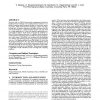666 search results - page 42 / 134 » Power analysis of embedded operating systems |
CODES
2006
IEEE
15 years 3 months ago
2006
IEEE
We present an adaptive, feedback-based, energy estimation model for battery-powered embedded devices such as sensor network gateways and hand-held computers. Our technique maps ha...
129
click to vote
TIM
2010
14 years 4 months ago
2010
In this paper, a novel low-power design technique is proposed to minimize the standby leakage power in nanoscale CMOS very large scale integration (VLSI) systems by generating the ...
ISCAS
2007
IEEE
15 years 4 months ago
2007
IEEE
— Many application-specific wireless sensor network (WSN) systems require small size and low power features due to their limited resources, and their use in distributed, wireles...
EMSOFT
2010
Springer
14 years 7 months ago
2010
Springer
Nucleos is a new runtime system for ultra-lightweight embedded systems. Central to Nucleos is a dispatcher based on the concept of e threaded code, which enables layers of abstrac...
DAC
2002
ACM
15 years 10 months ago
2002
ACM
Previous work on DRAM power-mode management focused on hardware-based techniques and compiler-directed schemes to explicitly transition unused memory modules to low-power operatin...



